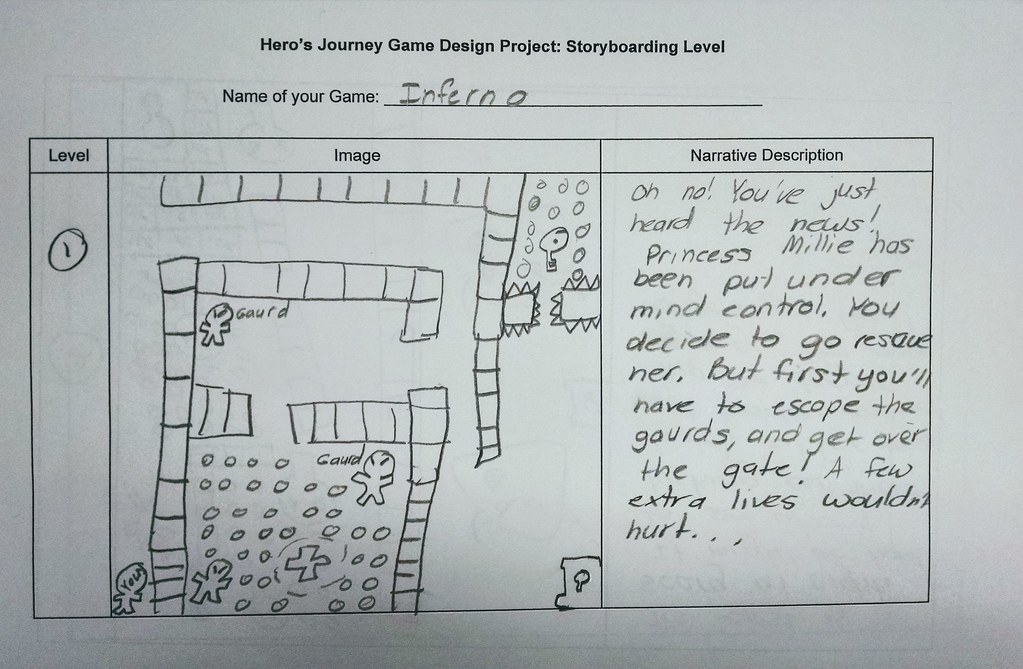Immerse yourself in a dimension where pixels come alive, where virtual worlds materialize before your eyes, and where challenges await your every move. Welcome to the realm of game design psychology, where the dance between gameplay and level design orchestrates an extraordinary symphony that resonates deep within the hearts of players. In this ethereal landscape, a captivating tale begins to unfold, revealing the intricate web of how psychology infuses itself into the very fabric of games, shaping the player experience like a master sculptor with boundless imagination and ingenuity. Step into this mesmerizing realm as we explore the pathways that intertwine in the psychology of game design and how they elevate our interactive adventures beyond the boundaries of reality. Brace yourself, for an enchanting journey awaits, one where we delve into the minds of players and designers alike, unravelling the secrets that forge unforgettable gameplay experiences.
1. Unleashing Emotions: Understanding the Impact of Gameplay on Player Engagement
In the captivating realm of video games, the potential for emotional connectivity between players and the gameplay experience is boundless. As players immerse themselves in virtual worlds, they embark on an exhilarating emotional journey that can both captivate and transform them. Understanding the profound impact of gameplay on player engagement requires a deep exploration of the intricate ways in which emotions are unleashed and harnessed within the gaming realm.
Games have the remarkable power to evoke a myriad of emotions, ranging from excitement and joy to tension and fear. The thrilling pursuit of victory, the adrenaline rush of overcoming challenges, and the heart-pounding suspense of facing virtual dangers, stir an array of emotions within players. Whether it be the unexpected plot twists in a narrative-driven game or the intense competition in a multiplayer online battle arena, gameplay elicits emotional responses in ways that traditional forms of entertainment simply cannot replicate.
- Motivation: Gameplay ignites a player’s motivation by allowing them to feel a sense of purpose and accomplishment. Each triumph over an obstacle fuels the desire to progress further, immersing players in a cycle of excitement and determination.
- Empathy: Through gameplay, players are afforded the unique opportunity to step into the shoes of various characters and explore diverse perspectives. This cultivates empathy, as they forge emotional connections with virtual beings, fostering a deeper understanding of complex human emotions.
- Social Interaction: Multiplayer experiences amplify player engagement by fostering social interactions within virtual environments. Whether teaming up with friends or forming alliances with strangers, the shared emotions experienced during gameplay intensify the sense of belonging and camaraderie.

2. Crafting Immersive Worlds: The Art of Level Design in Enhancing Player Experience
Level design plays a crucial role in creating a truly immersive gaming experience. It goes beyond just creating visually stunning worlds; it involves meticulous planning and attention to detail to make every interaction and movement in the game feel meaningful. A well-crafted level can transport players to different dimensions, sparking their imagination and keeping them engrossed in the game for hours on end.
One fundamental aspect of level design is the seamless integration of gameplay mechanics and storytelling. By carefully aligning the level layout with the game’s narrative, developers can enhance the player’s emotional connection to the game world. Whether it’s navigating treacherous terrains or solving challenging puzzles, well-designed levels provide players with a sense of accomplishment and progression, making them feel invested in the game’s overarching storyline. Additionally, incorporating unexpected surprises and hidden secrets throughout the level design can further captivate players, encouraging them to explore every nook and cranny of the virtual world.
- Creating visually stunning environments that transport players to different worlds
- Meticulously planning level layouts to enhance gameplay mechanics and storytelling
- Aligning level design with the game’s narrative to deepen player engagement
- Providing a sense of accomplishment and progression through challenging obstacles
Overall, crafting immersive worlds through the art of level design is a delicate balance of creativity, technical skill, and player psychology. It involves designing environments that not only look impressive but also provide a rich and interactive experience for players. With careful attention to detail and a deep understanding of player expectations, level designers can create virtual worlds that are truly captivating, leaving players eagerly anticipating the next adventure.
3. Psychological Hooks: Leveraging Gameplay Mechanics to Motivate and Retain Players
When it comes to creating engaging and addictive games, understanding the psychology of players is crucial. By incorporating specific gameplay mechanics, developers have the power to captivate and retain players, ensuring a long-lasting and enjoyable experience. Here are some innovative psychological hooks that can be leveraged:
- Reward systems: Humans are naturally driven by rewards. By implementing a well-designed reward system, games can tap into the players’ desire for recognition and achievement. Whether it’s unlocking exclusive content, receiving in-game currency, or gaining levels, rewards act as powerful motivational tools, urging players to continue their journey and stay engaged.
- Social interaction: Humans are inherently social beings, craving connection and belonging. Games that incorporate social features such as multiplayer modes, leaderboards, or even virtual communities tap into this innate need. Providing players with opportunities to interact with others, cooperate or compete, can significantly enhance the gaming experience, ultimately leading to greater player retention.
By leveraging these psychological hooks, game developers can create immersive and captivating experiences that keep players coming back for more. The possibilities are endless, limited only by their creativity in implementing these mechanics. Whether it’s through addictive reward systems or fostering social interaction, understanding and incorporating psychological elements into gameplay is key to building games that players can’t put down.
4. Designing for Flow: Strategies to Optimize Player Engagement and Performance
When it comes to game design, achieving optimal player engagement and performance is the holy grail. To create an immersive experience that captivates players and keeps them hooked, designers must consider various strategies for enhancing the flow of gameplay. Here are some creative ways to design for flow:
- Clear goals and feedback: Designers should provide players with clear objectives and goals, ensuring they always know what they are working towards. Additionally, providing immediate and meaningful feedback helps players gauge their progress and adapt their strategies accordingly.
- Gradual skill progression: Introducing mechanics and challenges gradually helps players build their skills progressively. Starting with simpler tasks and gradually increasing difficulty fosters a sense of accomplishment and encourages players to push their limits.
- Balance challenge and skill: Striking a balance between the level of challenge and the player’s skills is crucial for maintaining flow. If a game is too easy, players might quickly lose interest. However, if it is too difficult, frustration may arise, leading to disengagement.
Varied and dynamic gameplay: Monotony is the enemy of flow, so incorporating varied gameplay elements and dynamic scenarios keeps players engaged and continuously stimulated. By introducing surprises, unexpected twists, and new challenges, designers can prevent boredom and ensure an immersive experience.
By implementing these design strategies, game creators can optimize player engagement, leading to enhanced performance and an unforgettable gaming experience. With an understanding of flow and its importance in game design, developers can cultivate a captivating environment that hooks players from the very beginning.
Closing Remarks
In the vast realm of gaming, where fantasies come to life and virtual worlds unfold, there exists a science so meticulously woven into the fabric of game design that it could easily be mistaken for magic. This article delved into the enchanting world of the psychology behind game design, exploring the intricate relationship between gameplay and level design, and how they ultimately shape the tapestry of the player experience.
As we peeled back the layers of this captivating realm, we unearthed the hidden truths that lie at the heart of every successful game. A masterfully crafted gameplay mechanic holds the key to unlocking the player’s yearning for challenge and achievement. From thoughtfully designed puzzles that tickle the mind’s synapses to adrenaline-pumping combat sequences that set the heart ablaze, the gameplay experience becomes a potent elixir that keeps players hooked in pursuit of the ultimate satisfaction.
But it is in the ethereal realm of level design that the true craftsmanship of game creation reveals itself. Like a painter with a boundless palette, level designers shape the landscapes upon which players stroll, soar, or stumble. Every carefully placed obstacle, hidden treasure, or panoramic vista serves a purpose greater than the sum of its parts. It guides the player’s emotion, weaves a narrative, and builds connections between their virtual self and the digital world before them.
However, the unyielding bonds between gameplay and level design go far beyond surface-level immersion. They dance together in an intricate choreography, dictating the ebb and flow of emotions that course through the player’s veins. The presence of a well-designed level can fuel the intensity of a climactic boss battle, while gameplay mechanics can flawlessly complement the intricacies of a beautifully crafted environment. Together, they forge an unbreakable union that encapsulates the essence of a game.
Armed with this newfound knowledge, we venture forth into the virtual wilds with a renewed perception of the artistry at play. Each game we encounter, we shall peer beyond its surface allure and unravel the underlying psychological secrets. We shall appreciate the seamless symphony of gameplay and level design as architects of emotional experiences, forever mindful of the profound impact they have on our journeys through the digital realms.
For it is in this enigmatic union that the true magic of game design resides. It is the alchemy that transforms lines of code and polygons into immersive universes that captivate our hearts and minds. It is the invisible hand that shapes our emotions, guiding us through joy, fear, triumph, and sorrow. So let us venture forth as players and creators, ever aware of the profound psychology that dances beneath the pixels, forever transformed by the psychology of game design.
In today’s world, digital games have become increasingly popular as an ever more popular form of entertainment. From mobile games, console games, to PC games, interactive video games have become an indispensable part of people’s daily lives.
Along with the progression of digital gaming, psychology of game design has become a leading factor in today’s game industry. As games are designed to be increasingly engaging and attractive, game designers are learning to use the principles of game psychology to create successful video games.
At their core, game designs are rooted in the psychology of play. By studying how the game mechanics and player experiences interact, designers create levels that are stimulating, engaging, and challenging. For example, a successful initial level design may provide a brief tutorial that alludes to more advanced concepts, while also introducing interesting puzzles that introduce players to the game’s story and world.
In addition, game designers also consider how difficulty level of the game affects the player’s experience. Too easy and the game may not be enjoyable, but too difficult and it could become too frustrating and deter players. That’s why designers typically utilize skill curves that provide difficulty levels that gradually increase over the course of the game.
In short, game designers carefully craft the gameplay and level designs for maximum impact on the player. Through psychological techniques such as difficulty scaling, tutorial levels, and puzzles, designers create experiences that are challenging, yet rewarding. Ignoring the psychology of game design could lead to a poor or boring game, so this is to be taken into account.
Ultimately, the psychology of game design is essential to creating immersive and engaging experiences for players. By utilizing psychological principles in gameplay and game designs, designers can create levels and game experiences that are both stimulating and entertaining.



